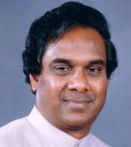

Since mid – 1980s, Sri Lanka’s textile industry has dramatically emerged as a strong sector boosting country’s economy via exports. Credit goes ofcourse to your Ministry. Can you explain how this happened?
Since mid 1980’s, it is the apparel industry in Sri Lanka which has grown rapidly emerging as a main foreign exchange earning industry for the country. At present, the apparel exports account for around 44 percent of the industrial exports from the country. Apparel industry grew mainly under the quota system and opening of free trade zones. Many foreign investors arrived in Sri Lanka to take the advantage of quotas, and gradually, the industry developed with local entrepreneurs entering into garment manufacturing. High technical competency of our technicians and easily trainable work force, were two main factors behind our success. The successive governments also have provided several facilities for investors to join this industry. Manufacturers were able to develop very cordial relationships with internationally renowned retailers from the USA and the EU. High standards of quality maintained, was another factor for the success.
Garments are a key source of earning foreign exchange besides generating employment opportunities for Sri Lanka. May we know the steps mooted your Ministry to ensure this sector flourishes further?
The garment industry provides direct employment to around 350,000 people and it is estimated that through indirect employment, it will provide livelihood to around one million, which is a considerable figure for a country of our size. The Ministry has encouraged investments in rural areas and provided special facilities. Government is assisting in the areas of Human Resources Development, productivity improvement etc. The services such as custom procedures, import and export documentation issue of visa certification has been streamlined to support this industry. Our government works very closely with the industry associations. The Textile and Apparel sector is facing many challenges in the post MFA period. Stiff price competition, shorter lead times, emergence of new competitors from the region, loosing popular quotas to China are some of the issues. The large scale manufacturers have been able to face the challenges successfully as they had well establish markets, and moved into product specialization with high value added products catering to upper markets. However, the Small and Medium sectors which were heavily dependant on quotas and producing items on FOB and NFE basis, were badly affected. However Sri Lanka has been able to maintain a modest growth rate of 4 percent indicating no significant negative impact. Strategies are underway to improve the SME sector and to improve its growth rate. A five-year strategy was drawn up by the Joint Apparel Association Forum with the blessings of the Government to face competition in quota-free era and the industry moved ahead to transform Sri Lanka into a fully integrated service provider - from a producer doing merely cut and sew operations.
How is non-textile and ancillary items sectors shaping up in Sri Lanka?
Non-textile and ancillary sector is picking up and the government is encouraging investments in this area also.
What after effects are the textile and apparel sectors of Sri Lanka facing post - MFA (Multi Fibre Agreement) and expiry of quota system?
The GSP + has shown positive results with a 17 percent increase in sales to the EU during 2006. The Government is promoting backward integration to increase value addition and draw maximum benefit from such schemes.
What prospects do you foresee in case of post-GSP + scheme and launch of Free Trade Agreement (FTA) between Pakistan and Sri Lanka?
The results of the FTA with Pakistan are yet to be realised. There has been a considerable increase in the import of fabrics from South Asian region during the last year. Growth of fabric imports from Pakistan increased by about 99 percent during the period 2003 to 2006.
How is your campaign ‘Garments without Guilt’ working?
This campaign is picking up well. We intend to develop a brand image of Sri Lanka through such efforts. Sri Lanka has the distinct advantage of complying to many ILO regulations, absence of child labour and elimination of sweat shops. Our factories maintain a very high standards, and some of them are second to none of the modern factories existing in the world, today. Most of the Sri Lankan factories possesses ISO 9000 certification and now WRAP. Other industry certifications and norms are increasingly being obtained and adhered to, by our factories and manufacturing units.
DISCLAIMER: All views and opinions expressed in this column are solely of the interviewee, and they do not reflect in any way the opinion of Fibre2Fashion.com.